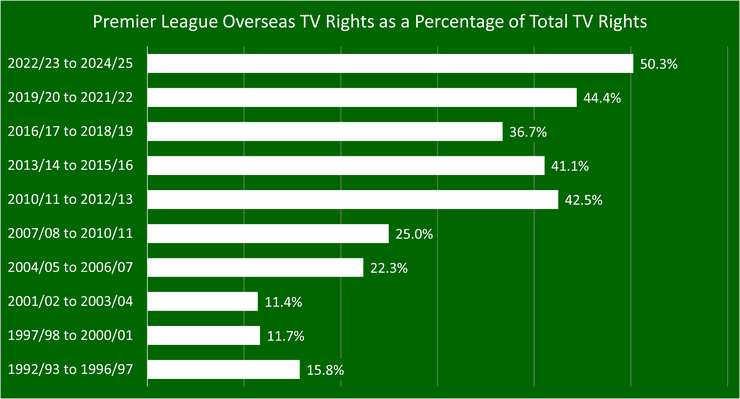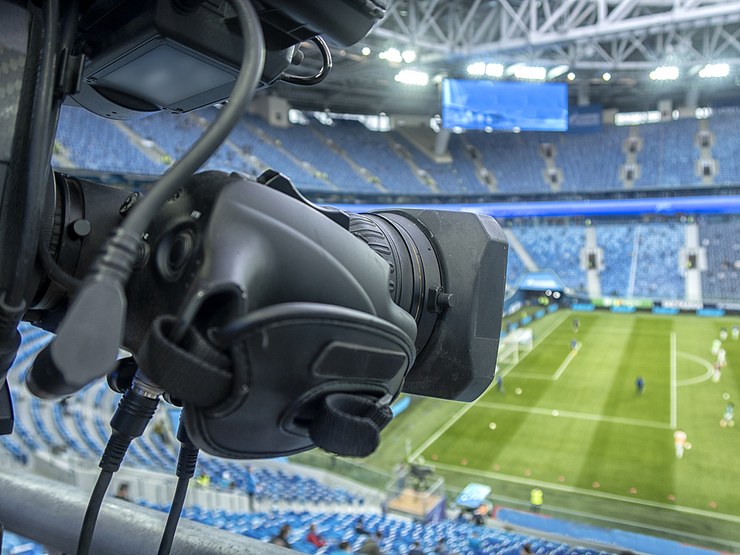The race to secure the hottest TV Rights deal in the British Sporting World has concluded. When all was said and done, an astronomical £6.7bn was the sum shelled out by the winning bidders for the rights to screen live Premier League matches, with the new deal encompassing four seasons, beginning with the 2025/26 campaign. An eye-watering figure at first glance – and a record amount for a domestic TV rights deal – but one which represents only a 4% increase on the £5bn deal thrashed out in 2018, which included three seasons beginning in 2019/20, but was ultimately extended as a result of the health crisis.
Under the new agreement, more games will be available than ever, and if measured on a price-per-match basis, there is only minimal difference between the new deal and the current arrangement. The Premier League are, nevertheless, delighted to have wrapped up the latest rights deal, which represents such a significant part of the league’s income, stating that the deal will, “provide financial certainty for clubs throughout professional football until at least 2029”.
It is good news for clubs and fans alike, with the number of live TV games rising to a minimum of 270 per season. One of the biggest headlines under the new TV structure is that every Sunday 2.00 pm kick-off will be screened live for the first time. The new deal is split between Sky, who landed four of the five packages on offer, and TNT, who grabbed the fifth.
As has been the case under previous deals, the Saturday afternoon blackout will remain in place – aimed at protecting match day attendances in stadiums and encouraging participation in grassroots football. From 2025/26, armchair viewers can turn to the following for their fix of the biggest and best football league on the planet.
Broadcasters

Sky
Sky were one of the main contributors to the explosive early success of the Premier League back in the 90s and will continue to be the dominant force amongst broadcasters under the new deal. From 2025/26, Sky will show a minimum of 215 live games spread across the following timeslots.
- Saturday 5:30pm
- Sunday: 2pm and 4:30pm
- Monday Night Football
- Friday Evening Fixtures
- Three rounds of midweek fixtures
- All 10 games on the final day of the season
Having also secured the Saturday 5:30 pm, Sunday 2:00 pm and 4:30 pm, Monday, Friday, and Saturday evening games under the present deal, the main change for Sky comes with the addition of the three midweek rounds of games, and all 10 games on the final day of the season.
TNT
Formerly known as BT Sport, TNT has emerged as Sky’s biggest rival in the race for TV rights. The broadcaster will continue to show live Premier League Football until the end of the 2028/29 season at least, having been awarded the rights to the fifth package, which consists of a minimum of 52 games split between the following windows:
- Saturday 12:30pm kick-offs
- Two rounds of midweek matches
Compared to the current deal tendered in 2018 – which saw TNT pick up the Saturday 12:30 pm games, 15 matches spread across two midweek rounds and five additional weekend games – the TNT offering remains largely unchanged.
BBC Retains Match of the Day
Having been a staple of Saturday night viewing for most of the last 60 years, fans will be pleased to know that the BBC has retained the rights to screen full highlights on Match of the Day. Also included in the new BBC package are Football Focus, MOTD2, and more extensive digital rights, which are predicted to lead to an increase in Premier League coverage on the BBC’s digital platforms.
Amazon Fail to Secure a Package
The major absentee from the list of broadcasters is Amazon. Under the current deal, Jeff Bezos’s online giant acquired the rights to screen 20 matches per season on the Amazon Prime Video platform, split between one full round of midweek fixtures and all games across a selected Bank Holiday Weekend. Under the new deal, these fixtures were moved into other packages, ultimately seeing Amazon miss out.
History of Domestic Premier League TV Rights Deals

The Premier League felt like a big deal upon its inception in 1992/93, with the £304 million paid by Sky raising a few eyebrows at the time. Even accounting for inflation, that sum – which equates to around £642 million in 2023 – pales in comparison to the prices paid since. Again hitting the headlines when breaching the £1 billion threshold for the first time in 2001/02, the sum required to secure the rights has only increased ever since.
International Rights Yet to be Determined
The success of the Premier League has extended far beyond British shores, with the English topflight now sitting comfortably as the most-watched sporting league in the world. With the Premier League continuing to attract the biggest names in the game, that trend shows no signs of slowing down. And, of course, the larger the international interest, the higher the price demanded for the overseas rights.

Beginning at a low of £40 million in 1992/93, representing 15.75% of the TV rights total, increasing international demand has seen prices soar in recent times – bursting through the £1 billion barrier for the first time in the 2010/11 to 2012/13 deal, equating to 42.48% of the total. The current extended 2022/23 to 2024/25 deal then saw another watershed moment, as, for the first time, the amount paid for the International TV Rights exceeded that paid for the domestic rights. Having secured one bumper source of income, another – potentially even larger sum – may follow hot on its heels when the new international rights deal is announced.

